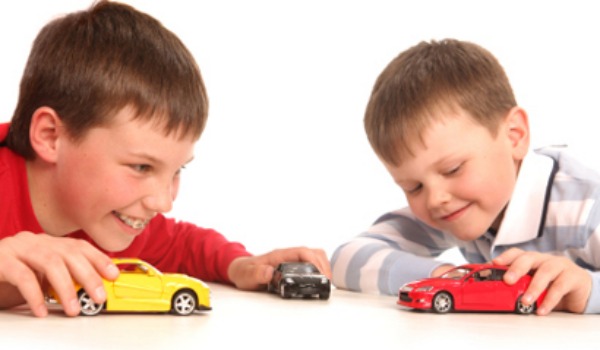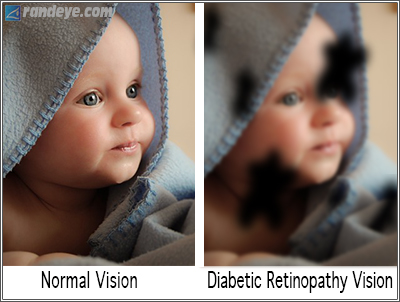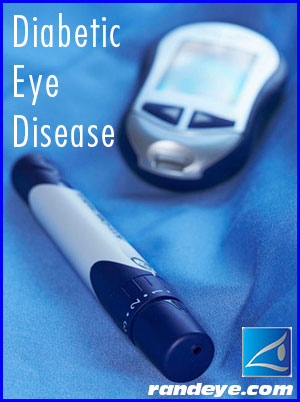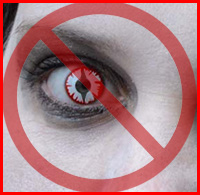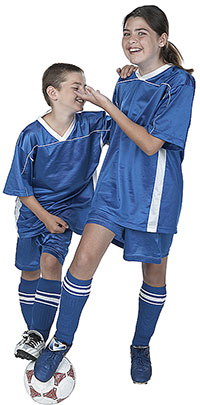Holiday Eye Safety Tips
The holiday season, as joyous as it is, can be a very dangerous time for your eyes. In order to stay safe this holiday season, you should take the proper precautions to avoid as many accidents as possible. While trips and falls can be common as you are decorating your home, there are many other accidents that may occur.
Here are a few Eye Safety Tips to stay cautious of this holiday season!
The Dangers of Glass Ornaments
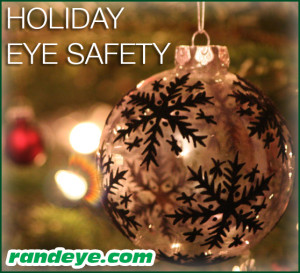 Glass ornaments can be a beautiful addition to liven up your family’s Christmas tree, but these fragile items can be broken instantly and easily, causing small fragments to fly everywhere. When cleaning up these shards of glass, betake caution in protecting your eyes. Wearing gloves and washing your hands after clean up will help prevent foreign objects from getting into your eyes. Keep children away from broken shards of glass.
Glass ornaments can be a beautiful addition to liven up your family’s Christmas tree, but these fragile items can be broken instantly and easily, causing small fragments to fly everywhere. When cleaning up these shards of glass, betake caution in protecting your eyes. Wearing gloves and washing your hands after clean up will help prevent foreign objects from getting into your eyes. Keep children away from broken shards of glass.
If you do get glass or any other foreign object stuck in your eye, washing it out with a saline solution or clean water. Refrain from rubbing your eyes. Call your eye doctor in the case of an emergency.
Christmas Lights, Wreaths and Trees
Hanging up decorative lighting may be fun, but there are also dangers that come along with it. Climbing up ladders or any other unstable surfaces carries the risk of falling and poking an eye.
Pine needles found on wreaths and trees can also pose as a threat to the eye.
If you do get poked in the eye, examine it in a mirror to check for fragments and call your optometrist.
Popping up the Champagne!
The holidays call for social gatherings and celebrations. For adults, always remember eye safety when popping up the champagne bottles. When it’s time to open the bottle of champagne, hold the cork down when you’re removing the wire wrapped around the cork. A great way to prevent the champagne from spraying or cork flying is to use a towel and point it away from yourself and others. Once you’re finally ready, hold the bottle at about a 45-degree angle and gently pull the cork out. Following these steps will prevent any injuries!
Holiday Toy Safety Tips
The holiday season is upon us! As we gather with friends, family and loved ones, creating a safe environment for celebrating is key in scoring a very happy holiday.
Did you know that each holiday season, toys and sporting equipment are responsible for thousands of eye injuries to children every year? These eye injuries are preventable; parents can keep their children safe by demonstrating the proper use of toys, purchasing age-appropriate toys and supervising them while in use.
Safe Toy Checklist & Purchasing Tips:
- Read all warnings and instructions.
- Make certain children wear appropriate eye protection for sports (face shields, helmets).
- Avoid toys with sharp or rigid points, spikes, protruding or projectile-firing parts.
- Inspect toys for safe, sturdy construction. Children’s toys should be durable and able to withstand impact.
- Look for the letters “ASTM which means the toys meets the national safety standards set by the American Society for Testing and Materials (ASTM).
- Repair or replace damaged or defective toys.
- Stray away from purchasing flying toys. Bows, arrows, slingshots, and darts are extremely dangerous.
- BB guns are not toys and should not be given to children.
- Keep toys intended for older children away from younger children.
Do not give toys with small parts to young children. They tend to put them in their mouths, increasing the risk of choking.
Happy Thanksgiving – 2014
Here at Rand Eye Institute, we are grateful for the holidays that bring together family, friends and loved ones. We wish you all a blessed Thanksgiving Day filled with love, joy and happiness.
Happy Thanksgiving, from our family to yours.
Diabetic Retinopathy – Diabetes
Diabetic Retinopathy
Is the most common complication of diabetes that affects the eyes and affects over 5.3 million Americans, 18 years old or older. It is caused by damage to the blood vessels of light-sensitive tissue at the back of the eye.
At first, diabetic retinopathy may cause no symptoms or only slight vision problems, however, eventually, it can result in blindness. Diabetic retinopathy can develop in anyone who has type 1 or type 2 diabetes. The longer a person has diabetes and the less controlled their blood sugar is, the higher at risk they are.
Symptoms include:
- Floaters
- Fluctuating vision
- Dark or empty areas in your vision
- Vision loss
- Difficulty with color perception
Patients with diabetes prevent or slow the development of diabetic retinopathy by taking prescribed medication as directed maintaining a healthy diet, exercising regularly, controlling high blood pressure and abnormal blood cholesterol levels, and avoiding alcohol and smoking. If the disease does develop, the potential for significant vision loss can be reduced by more aggressive blood sugar, pressure and cholesterol control. In addition, newer medications for retinopathy have recently been shown to be very effective for preserving, and sometimes improving vision.
There are several factors that can influence someone with diabetes to develop diabetic retinopathy. These include poor blood sugar, blood pressure and blood lipid control, the length of time they’ve had diabetes, race and family history. African Americans and Hispanics are twice as likely to have diabetes.
If you have diabetes, see your eye doctor for a yearly-dilated eye exam — even if your vision seems fine — because it’s important to detect diabetic retinopathy in the early stages.
Diabetic Eye Disease – Awareness Month
Diabetes is the leading cause of blindness in working-age Americans.
According to the American Academy of Ophthalmology, about 29 million Americans, 20 or older have diabetes and almost one-third does not even know they have the disease and are at risk for losing their vision.
Early symptoms of diabetes can often go undetected and vision may not be affected until the disease is more severe and even harder to treat. Some symptoms that are usually quick to detect include:
- Frequent urination
- Excessive thirst
- Weight loss/weight gain
- Increased hunger
- Tiredness
- Lack of focus
- Numbness in the hands or feet
A group of eye problems can arise due to diabetes. Cataracts and glaucoma are only a couple of vision stealing side effects. If you have diabetes you may get cataracts at a younger age, and your chances of developing glaucoma doubles.
Early diagnosis of diabetes and maintaining a strict control of blood sugar and hypertension through a balanced diet, exercise and medication can help reduce your risk of developing eye disease that is associated with diabetes. Eye doctors are often the first to detect diabetes, so setting up annual appointments with your doctor can be life saving.
Halloween Eye Safety Tips
Halloween is a great time to dress up and enjoy the night with friends and family, but every year, hundreds of adults and children are treated in emergency rooms because of eye-related injuries. These injuries can be prevented by following some of our easy tips and ensure a fun and safe Halloween..
HALLOWEEN EYE SAFETY TIPS:
-
Never buy cosmetic contact lenses without a prescription from an eye care professional, because it is both illegal and dangerous. Improper use of cosmetic contacts can result in serious eye conditions including bacterial infections, swelling, eye pain, sensitivity to light, pink eye and loss of clarity.
-
Avoid pointed props such as swords, spears or wands, which can be a danger to children’s eyes.
-
When using makeup or face paint, be sure that it is hypoallergenic to avoid undue reaction around your eye. Don’t paint eyebrows or eyelashes, because sweating can cause the paint to drip into your eye.
-
Make sure your mask or accessories fit properly and do not obstruct or block vision.
-
Carry a flashlight to illuminate dark paths and walkways. Daytime trick or treating is always a safer option.
Rand Eye Institute wishes everyone a thrilling Halloween weekend. Stay safe!
Computer Eye Strain
Eye injuries come in all shapes, ways and forms, they occur when you lease expect it. Cleaning your home, playing catch with your children or even sitting at your work desk. Staring at a computer screen monitor for hours on end has become a norm in modern workdays, but inevitably, all that staring can put a real strain on your eyes.
Computer Eye Strain
Computer eye strain also known as, Computer Vision Syndrome (CVS), is not specifically one type of eye problem, but a whole range of eye strain and pain experienced by computer users. Working adults aren’t the only ones who are vulnerable to CVS (Computer Vision Syndrome). Kids who stare at portable gaming devices or use computers throughout the day at school and home also experience eye problems.
How Can Computer Screens Affect Vision?
Computer Vision Syndrome is similar to carpal tunnel syndrome and other stress-related injuries. It happens when the same motion is done over and over again and can worse the longer the activity is continued.
Working at a computer requires the eyes to stay in continuous focus and acquires a lot of effort from your eye muscles and is more strenuous than reading a book or looking at a piece of paper due to the elements of screen contrast, flicker and glare. Computers slow down the blinking rate, so eyes can dry out easily. Computer related eye injuries are more likely to occur if you already have an eye problem – such as nearsightedness or astigmatism.
What are the symptoms of Computer Vision Syndrome?
- Blurred vision
- Double vision
- Dry eyes
- Red eyes
- Headaches
- Neck and/or back pain
- Stinging and itchy sensation
- Temporary myopia (can’t see distant objects clearly right after computer use)
Tips on How to avoid Computer Vision Syndrome?
- Sit about 25 inches away from the computer screen and position your screen so your eyes gaze slightly downward.
- Follow the 20-20-20 rules! Every 20 minutes shift your eyes to look at an object at least 20 feet away for at least 20 seconds.
- Reduce glare from the screen by lighting the area properly.
- If your eyes start to feel dry, use artificial tears to keep them feeling fresh.
- Don’t forget to blink!
Children’s Eye Injuries
Children are prone to injuries, whether it’s a scraped knee or bruised elbow. Eye injuries, in particular, are extremely dangerous and very avoidable. When children participate in sports, recreation, crafts or home projects it is important for them to know eye safety practices and use the appropriate protective glasses. Here are some tips to keep your child away from eye-related injuries.
- Children should wear sport eye protectors, made with polycarbonated lens when playing.
- All chemicals and sprays should be kept out of reach of small children.
- Be a role model for your child and use approved eyewear during potentially dangerous yard work and household repairs and projects.
- Avoid projectile toys such as darts, bow and arrows and missile firing toys.
- Look for toys that are marked “ASTM”, which means the products meets the national safety standards set by the American Society for Testing and Materials.
- Do not allow your children near fireworks, especially bottle rockets. An adult should always handle fireworks.
- Make sure children are properly secured in baby carriers or safety seats while on the road. Children under the age of 12 should never ride in the passenger seat. Store all loose items, as any loose object can become a dangerous projectile in the case of a crash.
Driver Saves Patient’s Life
Rand Eye Institute’s Rick Elya has made it to the news for his heroism! We are proud of our employees who take pride in serving the community and doing what’s best for our patients. Good job, Rick!
Read Full Article and Watch the Video on WSVN 7 News!
https://www.wsvn.com/story/26718628/clinic-driver-saves-patients-life-during-route
How to Choose the Right Protective Eye Wear
Choosing the right protective eye wear can stave off eye-related injuries at work and at home, for both adults and children alike. Wearing the proper protection, especially among people who wear contacts or have had corrective eye surgery can be invaluable when it comes to preserving sight and preventing eye trauma.
Shopping for these glasses does not need to be such a difficult task.
- All lenses should be made of polycarbonate, since that is the strongest lens material available. All polycarbonate lenses absorb ultraviolet light and are scratch resistant, which is also a plus in protecting your eyes.
- Be sure to only use lenses that are approved by the American National Standards Institute. The ANSI sets the safety standards for lenses based on their performance and what they are designed to be used for.
- Be sure to try on the glasses while shopping to make sure they fit properly.
- There are different types and styles of glasses depending on what you will be using them for. Whether it’s for work, sports or at home, ask a specialist to help you find a pair that is right for you.
Some Do’s and Don’ts for Proper Use of Eye Protection
- Do clean your eye protection regularly. Follow manufacturer’s instructions.
- DON’T use goggles if they are scratched, don’t fit properly or the elastic band is frayed.
- DO inspect your eye protection each time before use.
- DON’T use safety spectacles if they are scratched, bent or don’t fit properly.
- DON’T use eye protection that is not designed to protect you from the actual hazards you will encounter while performing your job duties.
- DO make sure you actually use your eye protection.
- DON’T use eye protection equipment if it doesn’t fit properly, obstructs your movement or blocks your vision.

